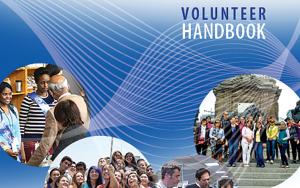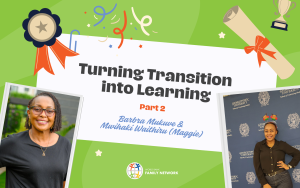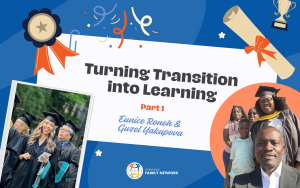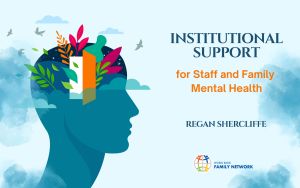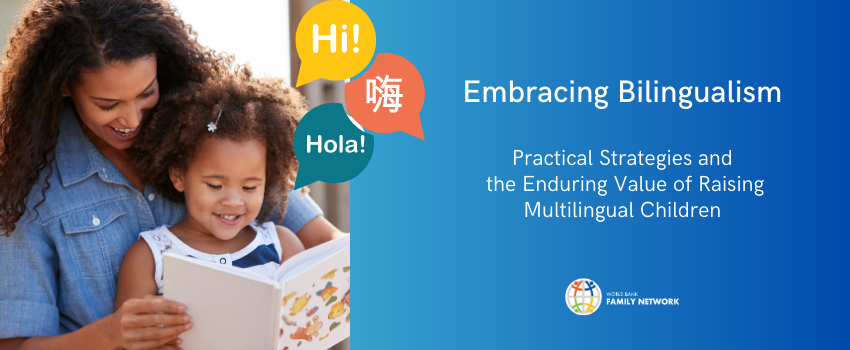
Embracing Bilingualism: Practical Strategies and the Enduring Value of Raising Multilingual
“To have another language is to possess a second soul.” Charlemagne 742 - 814
"Never give up" - goes the famous saying. Easier said than done when it comes to raising bilingual children. Global nomads become increasingly familiar with the benefits of bilingualism and often strive to pass their mother tongues on to their kids while living abroad. In recent years, numerous studies have confirmed multilingualism as a superpower giving individuals a head start in their future professional lives. Those who speak multiple languages tend to demonstrate deeper cultural empathy, a skill very much needed while navigating diverse cultural landscapes.
While some parents succeed in introducing a second language early on and making it part of the family's daily routine, others quickly get discouraged by the challenge. Day-to-day downsides such as lack of time or necessary support, a disinterested child, or frequent relocations often come in between and overshadow future benefits.
If you are part of the latter, don't despair! Together with LingoCircle, we have prepared some easy-to-adopt strategies that will set your family up for success on your bilingual journey.
The Multifaceted Benefits of Bilingualism
Before delving into practical tips, it's pivotal to acknowledge the manifold rewards that bilingualism bestows upon young learners. Far beyond the mere ability to converse, write and read in two languages, bilingual children often exhibit enhanced cognitive flexibility, demonstrating superior problem-solving skills and creativity. Studies show that bilingual individuals have better attention and task-switching capabilities.
Research by Bialystok, Craik, and Luk (2012) in Trends in Cognitive Sciences highlights that managing multiple languages enhances executive functions - skills used to achieve a goal - such as planning and organizing or emotional regulation.
This cognitive advantage extends to academic and professional spheres, providing a competitive edge in a globalized job market. In an ever-more interconnected world, mastering two or more languages can open the door to unexpected opportunities. Employers tend to privilege bilingual candidates who can effectively communicate across cultural divides and help expand business globally. No wonder being multilingual often rhymes with a higher salary.
Finally, lifelong bilingualism induces structural plasticity in the brain, increasing gray matter density in language processing areas [Mechelli et al. (2004)] and can maintain neural efficiency in aging, delaying Alzheimer's onset as per Gold et al. (2013) in The Journal of Neuroscience.
The above findings undeniably underscore the profound cognitive and neurological benefits of bilingualism and inevitably bring us to the question of how to succeed in raising bilingual children.
Here are some practical tips that you can apply straight away:
- Start Early
Introducing a second language at an early age is highly beneficial. Infants have a natural ability to differentiate between various sounds, which makes them effective language learners. However, even if your child is older, it's never too late to start.
- Be Consistent
Maintaining consistent exposure to both languages is crucial. Regular, meaningful engagement in each language can be structured around daily routines or specific activities, fostering an environment where switching between languages becomes second nature to the child.
- Introduce Structured Language Plans
- One Person, One Language (OPOL) Method: Assign each parent or caregiver a specific language to consistently speak with the child. For instance, one parent speaks only Spanish, while the other speaks only English, ensuring consistent exposure to both languages.
- Minority Language at Home (ML@H) Method: Use the minority language exclusively at home to strengthen the child's ability to communicate in that language, reserving the community language for school and external activities.
- Enrich the Linguistic Landscape
Creating a language-rich environment is essential. Surround your children with books, music, and other resources in both languages. This immersive strategy not only aids language acquisition but also deepens the child's connection to the cultural nuances of each language, enhancing their global perspective.
- Wisely Use Technology
Technology offers a plethora of tools to support language learning. From educational apps to online storytelling, digital resources can complement traditional learning methods when balanced with real-life linguistic interactions.
- Celebrate Cultural Heritage
Integrating cultural traditions into the language-learning journey enriches the experience, making it more engaging and meaningful. Celebrating festivals and exploring cultural traditions can heighten a child's appreciation for the languages they are learning.
- Encourage Fearless Communication
It’s important to create an atmosphere where children feel comfortable using both languages, even if it means making mistakes. Emphasizing communication over correctness encourages children to use their language skills freely, fostering confidence in their bilingual abilities.
- Act with Patience and Positivity
The path to bilingualism is a gradual one, filled with ups and downs. Celebrating small successes and maintaining a positive outlook can significantly impact a child's motivation and progress.
- Make it A Family Affair
Involving the entire family (also family members based overseas) in the language learning process can reinforce the child's learning experience, making bilingualism a shared journey rather than a solitary endeavor.
- Search Professional Support When Needed
There are times when additional support from language educators can be beneficial. Tailored language programs and professional guidance can address specific challenges and enhance the learning experience. In its live online classes LingoCircle utilizes tailored methodologies like Total Physical Response (TPR) to engage younger learners through actions and spoken language.
Children are connected with peers of similar identity backgrounds and language levels in group classes. This encourages socialization and language use in a supportive setting.
Remember that raising bilingual children is an ongoing and long-term process. The effort you put into it is an investment in your kids’ future, so don’t give up despite evident challenges that may appear along the way. Think of it as another dimension of the exciting journey you and your family already live together. Ultimately, transmitting your mother tongue means sharing your heritage and personal story with your loved ones.

This article was prepared in collaboration with LingoCircle, an online bilingual school founded in 2019 to offer bilingual education to multi-cultural families in the United States and around the world. Its virtual programs are designed to engage preschool and elementary school-aged children through fun and interactive lessons and activities. Children enjoy many of the same experiences they would have in an in-person school setting. They’ll get introduced to the culture, to reading and writing all while learning the language.



